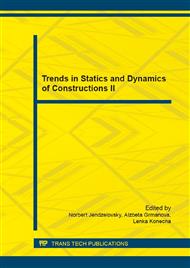p.1
p.5
p.10
p.16
p.22
p.28
p.34
p.38
p.44
CFD Analysis of Wind Effects on High-Rise Buildings Complex "Panorama City in Bratislava"
Abstract:
Analysis of wind flow upon high-rise buildings is very common topic. Nowadays, there are no general or analytical ways how to analyze wind effects on irregular shaped high-rise buildings complexes. Scaled experiments tested in wind tunnels are best for precise solutions, however they are time consuming and expensive too. Therefore we use computational modeling software based on finite volume method to analyze these effects and then, thanks to these analysis we can design structures and optimize them. Paper deals with simplified 3D analysis of wind effects on high-rise buildings complex "Panorama City" located in Bratislava-Slovakia. Through this analysis we obtain results for wind speed near objects and external pressure coefficient as well. Both of them will be helpful to gain insight for future constructions or verification of already constructed ones.
Info:
Periodical:
Pages:
1-4
Citation:
Online since:
June 2016
Authors:
Keywords:
Price:
Сopyright:
© 2016 Trans Tech Publications Ltd. All Rights Reserved
Share:
Citation:


